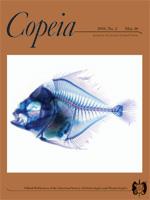Intrapopulation diet specializations may result from the use of different dietary items or foraging tactics by individuals within a single population. The damselfish, Dascyllus aruanus, is a highly site-attached coral reef fish living in size hierarchies among branched corals. The trophic niche width and feeding specialization of this species were explored using stable isotopes and stomach content analyses. Intra-group niche variation was mainly related to fish size. Within social groups, D. aruanus gradually shifted its foraging tactics according to size; smaller fish fed on benthic prey such as isopods and copepods, and the larger fish foraged in the water column on planktonic copepods and larger-sized prey. Group density was found to explain some variation in trophic niche characteristics; greater specialization on prey size was observed in the colony having the highest density. All members of the largest colony foraged more frequently in the water column. Knowing that planktonic copepods are more energy-rich than benthic ones, a positive group-size effect facilitating access to preferred prey is suggested. Group size and group density effects on trophic specialization did not have any impact on body condition, suggesting that the behavioral plasticity of D. aruanus in its foraging strategies permits compensation for the maintenance of body conditions.
How to translate text using browser tools
20 May 2010
Trophic Niche Width, Shift, and Specialization of Dascyllus aruanus in Toliara Lagoon, Madagascar
Bruno Frédérich,
Olivier Lehanse,
Pierre Vandewalle,
Gilles Lepoint
ACCESS THE FULL ARTICLE





